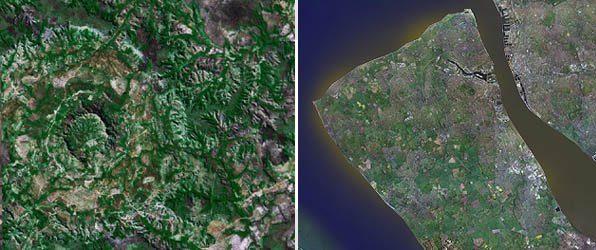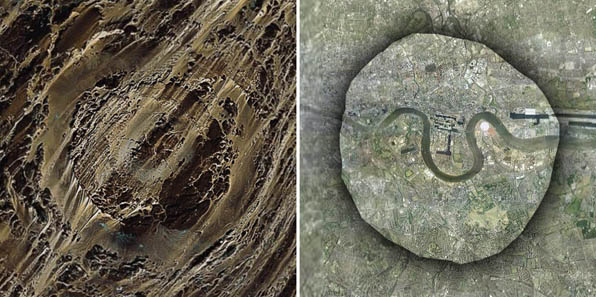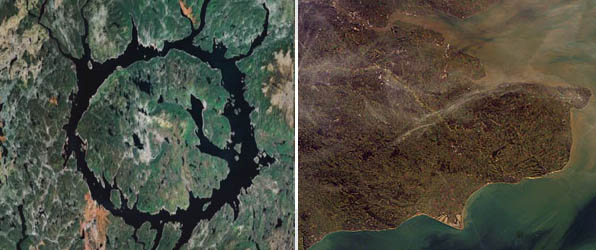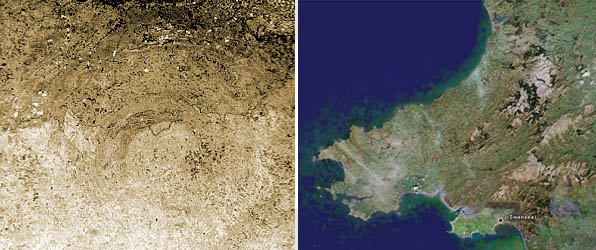| Here
is a selection of the best-known meteor craters on Earth in comparison to places
on Earth to give a sense of scale to the devastation that would be caused by a
modern-day impact.

Commonly
known just as "Meteor Crater", this impact in Arizona is 1,200m (4,000
ft) wide and is shown in comparison to the westerly quater of Central Park in
New York. The crater was formed 50,000 years ago and although humans were populating
parts of of the world at this time, it would only have troubled a few hundred
wooly mammoths in America. The cause of the crater was a meteorite 50m across.

This
is the Serra da Cangalha meteor crater in Brazil. It is around 8 miles wide and
300 million years old, created long before the rise of the Dinosaurs. For comparison,
on the right is shown the Wirral peninsula, England, population 300,000.

Pictured
above is the Aorounga impact crater in Chad, Africa. It would have been created
about 300 million years ago. It is 8 miles wide and is shown together with London
for scale.

This
is the Manicouagan Reservoir, an impact crater formed 212 million years ago when
dinosaurs had just evolved. Its original size was approximately 60 miles wide
but has shrunk slightly due to geological processes. It is shown in comparison
to Kent in South East England.

Although
not the most impressive picture to end on, the above left photo shows the Vredefort
crater in South Africa, which is the largest verified impact crater on Earth.
The object that struck the Earth was 6 miles wide and caused a crater about 180
miles across. An object this size would instantly annihilate an area the size
of South Wales (shown above right) and the global repercussions would be immense.
Fortunately this impact happened 2 billion years ago before any complex life evolved.
The
image below shows the size of the object which created the Vredefort crater.

The
above object would have been the same size as the one which created the Chicxulub
Crater on the Yucatán Peninsula, commondly believed to be the impact responsible
for casuing the mass extinction 65 million years ago which included the death
of the dinosaurs.
Click here
for an examination of the liklihood of a meteor strike.
©
Gavin Rymill 2006
|